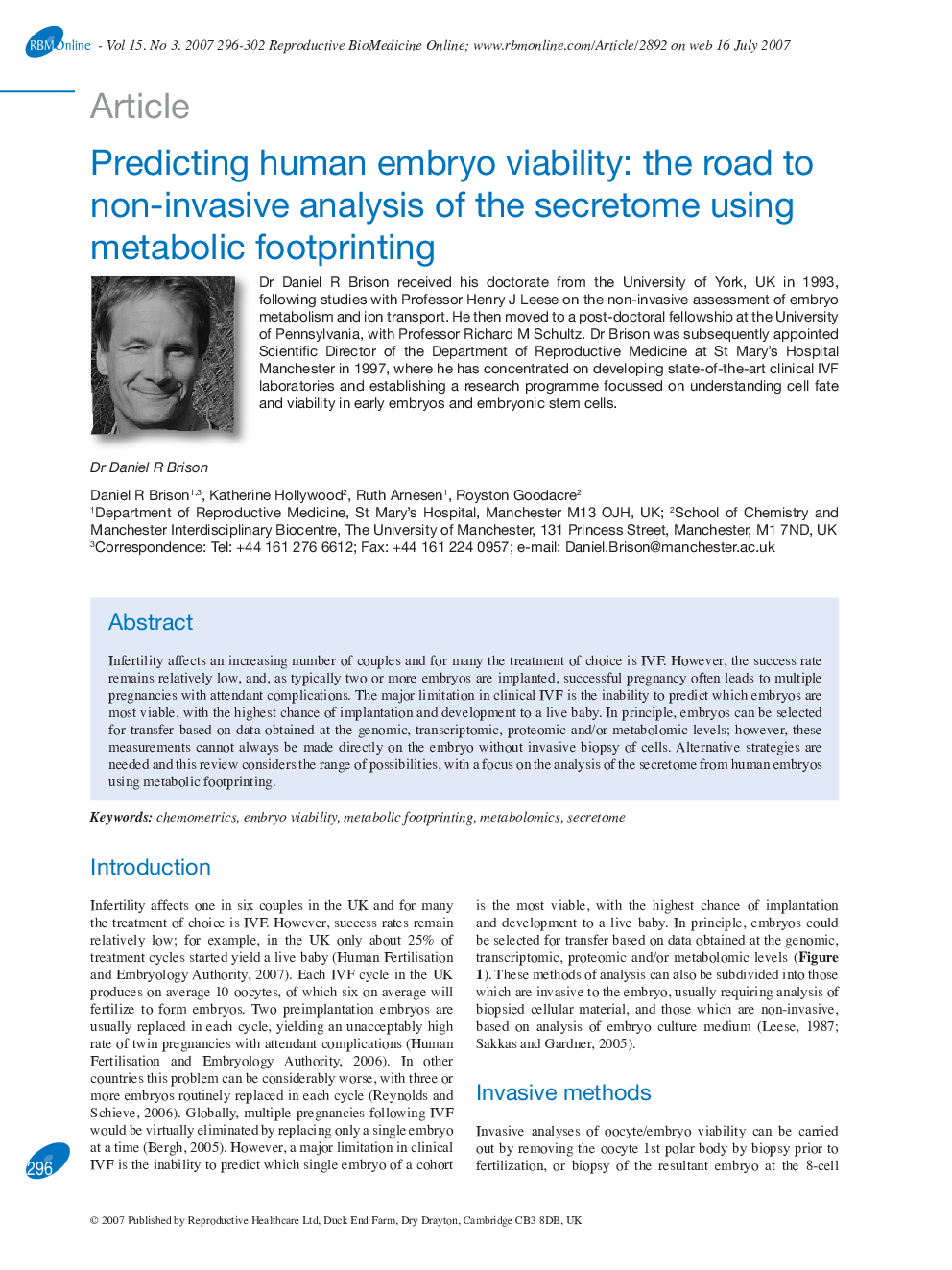| Article ID | Journal | Published Year | Pages | File Type |
|---|---|---|---|---|
| 3971458 | Reproductive BioMedicine Online | 2007 | 7 Pages |
Infertility affects an increasing number of couples and for many the treatment of choice is IVF. However, the success rate remains relatively low, and, as typically two or more embryos are implanted, successful pregnancy often leads to multiple pregnancies with attendant complications. The major limitation in clinical IVF is the inability to predict which embryos are most viable, with the highest chance of implantation and development to a live baby. In principle, embryos can be selected for transfer based on data obtained at the genomic, transcriptomic, proteomic and/or metabolomic levels; however, these measurements cannot always be made directly on the embryo without invasive biopsy of cells. Alternative strategies are needed and this review considers the range of possibilities, with a focus on the analysis of the secretome from human embryos using metabolic footprinting.
